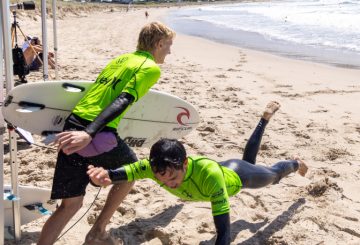Giáo viên lo lắng rằng học sinh đang sử dụng trí tuệ nhân tạo (AI) để gian lận các bài tập ở trường. Một số học sinh cố gắng tránh bị phát hiện. Mặc dù AI có thể giúp giáo dục, giáo viên nói rằng việc lạm dụng nó là một vấn đề lớn. Nhiều trường học sử dụng phần mềm để kiểm tra AI trong các bài luận, nhưng nó không phải lúc nào cũng hiệu quả.
Doug Walker, trưởng khoa học tại Đại học St. Patrick Wellington, đã đề cập rằng việc lạm dụng AI đang gia tăng nhanh chóng. Trường hiện đang chạy một máy dò trên tất cả các công việc dựa trên máy tính. Ông tin rằng nhiều sinh viên có thể sử dụng AI nếu có cơ hội. Thật khó để giáo viên tìm ra bao nhiêu công việc thực sự được thực hiện bởi học sinh so với AI.
Các công cụ phát hiện AI có thể đưa ra các kết quả khác nhau về việc liệu một bài luận có được tạo bởi AI hay không. Walker thường kiểm tra các chỉnh sửa mà sinh viên thực hiện đối với công việc của họ. Trong một trường hợp, anh thấy một sinh viên yêu cầu ChatGPT viết lại bài luận của họ theo phong cách trẻ trung hơn. Học sinh bây giờ sao chép và dán ít hơn, vì họ biết điều đó làm dấy lên sự nghi ngờ. Một số người sử dụng AI để tạo nguồn hoặc đơn giản hóa các ý tưởng phức tạp, nhưng Walker cảnh báo điều này có thể làm mờ ranh giới giữa trợ giúp và gian lận hoàn toàn.
Giáo viên tiếng Anh ở Auckland Kit Willett phát hiện ra rằng khoảng 20% học sinh đã lạm dụng AI vào năm ngoái, điều này khiến anh ngạc nhiên. Gian lận với AI đã trở nên dễ dàng hơn vì nó rất dễ tiếp cận. Phó hiệu trưởng của Onslow College, Michael Bangma, tin rằng nhiều trường hợp lạm dụng AI không được chú ý. Ông cho biết một số trường học đang quay trở lại các phương pháp cũ, như viết bằng tay, để tránh những vấn đề này.
Susana Tomaz từ trường trung học nữ sinh Westlake lập luận rằng những lo ngại về việc lạm dụng đôi khi bị phóng đại. AI không làm tăng đạo văn; nó chỉ là một phương pháp mới. Bộ Giáo dục có hướng dẫn, nhưng giáo viên Hamilton Benny Pan nghĩ rằng cần có thêm hướng dẫn. Ông cảm thấy sự thiếu định hướng này cho phép sinh viên lạm dụng AI mà không sợ hãi.
Tại Tauranga, giáo viên Chris Dixon của Trường Maungatapu nhận thấy rằng trong khi học sinh sử dụng AI để nâng cao câu chuyện của họ về Maui, các sản phẩm cuối cùng đã làm mất đi giọng nói độc đáo của trẻ em. Điều này đặt ra câu hỏi về quyền sở hữu công việc của họ. Trong khi một số sinh viên thích kết quả, Dixon lo ngại điều này có thể ảnh hưởng đến sự sáng tạo của họ. AI đã giúp họ hoàn thành các dự án một cách nhanh chóng, nhưng ông lo sợ nó có thể ngăn cản các kỹ năng truyền thống như vẽ.




























































